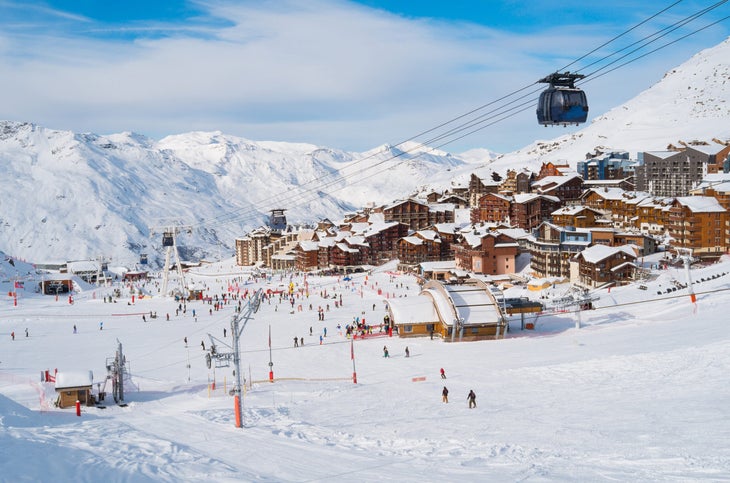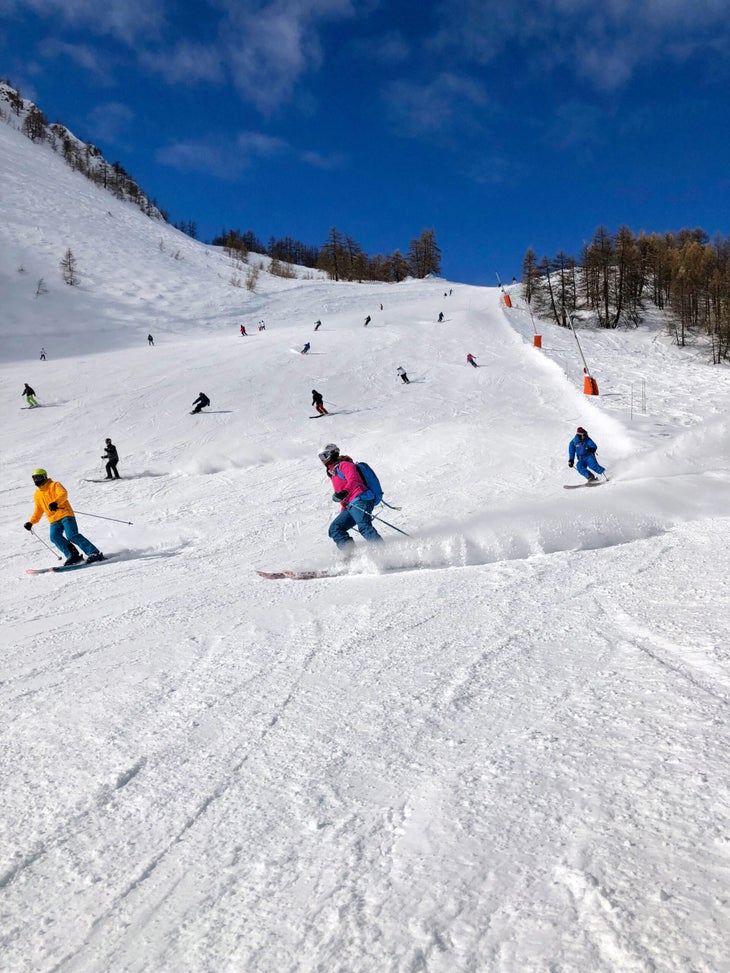Products You May Like
Get full access to Outside Learn, our online education hub featuring in-depth fitness, nutrition, and adventure courses and more than 2,000 instructional videos when you sign up for Outside+
Sign up for Outside+ today.
In mid-2022, Europe’s ski areas were set for a return to normal, carefree post-pandemic operations and winter tourism, the first since 2019. The Russian invasion of Ukraine, however, proved it was going to be a prolonged struggle with serious geopolitical tensions—and repercussions. The energy stand-off between Moscow and Europe sparked a necessary, if herculean effort to wean European economies off Russian natural gas, which has sent energy costs skyrocketing. At ski resorts, the energy bills are hitting home—but most resorts are promising the impacts on skiers will be minimal.
Also Read: Science Confirms What Skiers Already Knew: Time in the Mountains Shapes Who We Are
Resorts from Austria to France to Italy are scrambling to reduce consumption while remaining open for skiers. Effective measures include running lifts at slower speeds, closing less popular or redundant lifts at certain times, and reducing other non-essential energy use. In France in particular, President Macron’s government has called for “energy sobriety.” The motivation is strong—estimates suggest that energy bills will be three to eight times higher than last winter, Anne Marty, deputy president of the Domaines Skiables de France (DSF) union told Euro News. For ski areas, that translates to millions of euros in higher energy bills.

Yet areas are poised to prove these broad measures to bring energy use down won’t ruin ski days or vacations, and in fact will hopefully have as little impact as possible on the ski experience. Haute-Savoie’s Chamonix has announced lifts may run 10 percent slower, and up to 30 percent if it’s very uncrowded. It also announced, as did Val Thorens, that buildings will have lower heat, reduced lighting, and snowmaking will be limited, measures which will be repeated through most European ski areas.
But still, some ski areas are threatening to throw in the towel for the winter to avoid going deep into the red in 2023. Villard-de-Lans, in the Vercours Massif, is one of these. “We won’t be able to pay [that kind of energy bill]. We won’t be able to open,” ski area manager Sebastian Giraud told France Radio 3 in late September after viewing new costs that would eat up nearly 25 percent of profits, up from the current five percent.
Marty’s DSF is lobbying the French government to have ski lifts classified as public transit in order to secure subsidies and avoid negative economic ripple effects on tourism, local ski villages, and jobs if some ski areas don’t open. And although resorts are working to minimize cost increases, some costs will be evident with slightly increased prices. (It’s worth noting daily lift tickets at major ski resorts in Europe are, on average, dramatically cheaper than a day ticket in North America—currently, an adult day pass at Verbier, for example, is 72 CHF/$76; Courmayeur, Italy, is from 56 EUR/$59.)

The situation is markedly better for ski areas which have been focused on moving their operations to renewable energy sources, although they will also take measures to reduce some energy consumption as a matter of principle. Switzerland’s Andermatt Ski Arena runs 100 percent of ski area operations on renewable energy from wind and hydropower, according to Stefan Kern, chief communication officer for Andermatt Swiss Alps AG. The town’s energy is supplied by a wood chip-burning power plant, all of which provides substantial insulation from the energy crisis. That means that despite the slow start to winter in Europe, running snowmaking operations as normal won’t break the bank. In France, Serre-Chevalier, in the Haute Alps region, makes 30 percent of its energy from renewables, but it will be slowing lifts slightly to conserve energy as well as doing less grooming, for general reduction of greenhouse gas emissions.
There is no denying it’s a difficult and abrupt transition for European ski areas, but as an industry at the forefront of climate change impact, it makes a lot of sense for resorts—and skiers—to embrace lower energy consumption, as well as the move to renewables. So for the majority of European resorts that will be open, it may be that the energy crisis could lead to permanent changes and a more energy efficient, greener ski industry overall.
